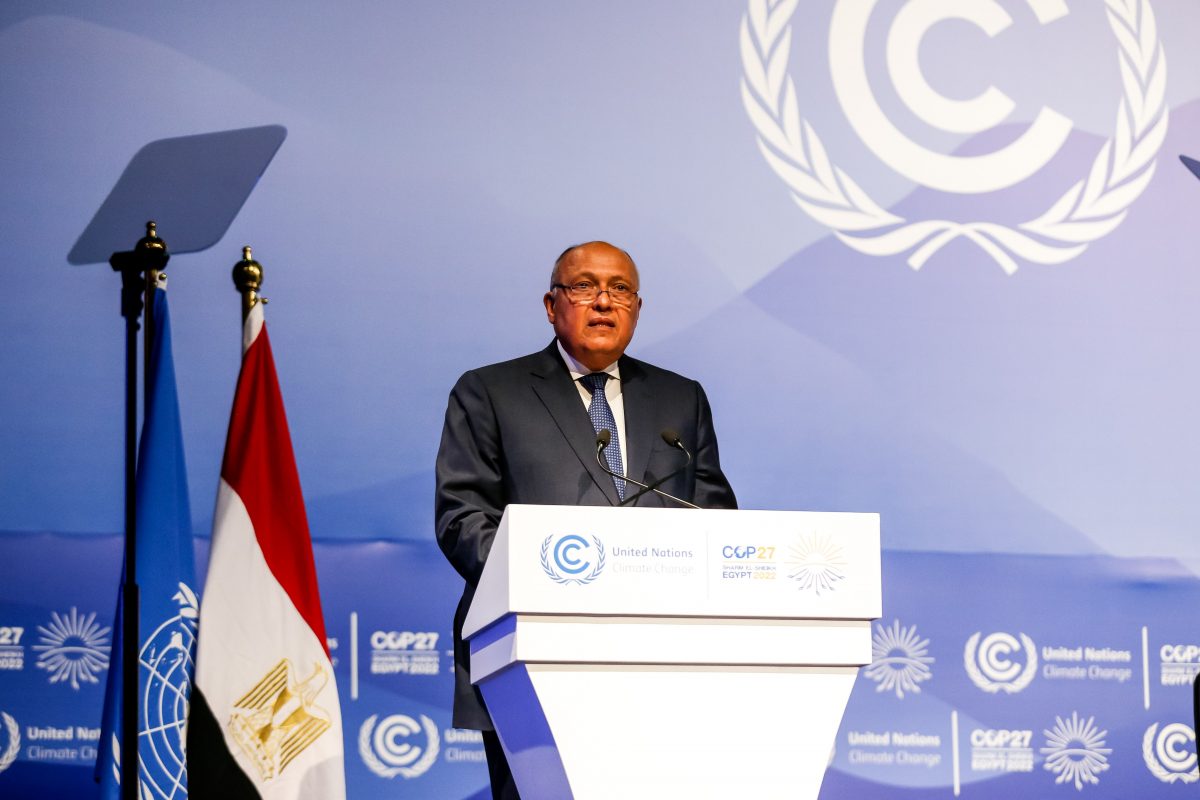The 27th annual UN meeting on climate held in Sharm El-Sheikh, Egypt established a loss and damage fund to compensate vulnerable nations for climate disasters.
Discussions at this year’s COP began on November 6 and continued into the early hours of November 20. In that time more than 90 heads of state and representatives of 190 countries debated global climate action but what are the key takeaways for the planet?
What is COP?
COP, which stands for ‘Conference of the Parties’, is a platform to accelerate global climate issues through reducing emissions, increasing adaptation efforts, and improving distribution of finances. It is the supreme decision-making body of the United Nations Framework Convention on Climate Change (UNFCCC) formed during the Earth Summit in Rio de Janeiro in 1992.
Daily Express environment editor Steph Spyro, who attended COP 27, said she thought COP is the best system that exists to protect the climate, but it is not perfect. She said: “The need for climate action is becoming more obvious by the day. COP 27 and the annual meeting of COPs is vital to ensure governments are held accountable.”
Opening statements
The conference opened with a sense of urgency after climate disasters were worse than ever in the past year. Greenpeace reported floods in Pakistan killed 1000 people and destroyed millions of homes. Meanwhile, the UK experienced record high temperatures and recorded 745 wildfires so far this year.
In his opening statement, COP 27 President Sameh Shoukry, said: “Raising ambition and urgent implementation is indispensable for addressing the crisis.” He cautioned that the world is not on track to keep global warming below 2C which was agreed at COP 21 and legally bound under the Paris Agreement.
UNFCCC executive secretary Simon Stiell urged leaders to act at COP 27. He said Paris established the agreement while Katowice and Glasgow defined the plan, but Sharm El-Sheikh had to implement change.
“The heart of implementation is everybody doing everything they can,” Stiell said.
In the spirit of action, delegates put loss and damage on the summit’s agenda for the first time. As the days went on officials would consider how developed countries can support the nation’s most vulnerable to climate change.

Photo: Dominika Zarzycka/NurPhoto/Shutterstock
President Zelensky at the World Leader Summit
It was not just climate issues being discussed this year. The humanitarian crisis brought on by Russia’s invasion of Ukraine on February 24 was raised on day two.
The President of Ukraine, Vlodymyr Zelensky, said: “There can be no effective climate policy without peace. The war has caused an energy crisis that forced countries to resume coal-fired power generation.”
Each leader at COP 27 gave a short address but Zelensky’s made one of the biggest impacts because of the reality he brought with his words. Speaking from his office, he did not look like other country leaders. He chose his usual t-shirt rather than a suit but still exuded determination, patriotism, and resolve.
Zelensky added the war has destroyed five million acres of forests in less than six months. According to Climate Portal, one mature tree can absorb 50 pounds of carbon dioxide annually meaning the conflict has caused more damage than just the energy crisis.
US envoy announces Carbon Emission Scheme
White House climate envoy John F. Kerry spoke on day three and explained the US plan for boosting renewable projects in developing countries.
He said: “Our intention is to put the carbon market to work to deploy capital to quicken the transition from dirty to clean power.”
Unfortunately, he had nothing to say on the US being one of the largest emitters of greenhouse gases according to Our World in Data. Instead, Kerry outlined the US Carbon Trading Scheme.
He explained the voluntary scheme would allow companies to claim carbon credits for investing in clean energy and decarbonisation projects. The credits would not be available to fossil fuel companies.
The scheme takes a step towards financing the transition to clean energy which has been a longstanding issue, particularly in developing nations.
US contribution ended on November 11 when President Biden addressed the conference. He said: “This is a whole new chapter for America and the planet. We have to do a lot more.”
A day for women
Gender Day opened the second week of the conference. Former Irish president, Mary Robinson, led the Gender Sensitive and Climate Just Financing Mechanism panel to discuss a basis for women to tackle the climate crisis and build resilience.
The panel concluded facilities built to support women helping build climate resilience need to be visible, simple, and accessible. Robinson said although there was money to make this possible there was nothing dedicated to supporting female entrepreneurs combating climate change.
UN deputy secretary-general Amina Mohammed said: “Women are essential, effective and powerful leaders to address the crisis, but they remain largely undervalued.”
Kevin Kariuki, African Development Bank Group Vice President for power, energy, climate, and green growth announced the bank was committing $100 million in loans to public and private sectors. The money is intended to address the interconnected issues of gender and climate.
He added it was also developing funds to allow men, women, and young people to borrow money for climate adaptation projects.
UK contributions
After the US made its input to COP 27 all eyes turned to the UK and prime minister Rishi Sunak. The last COP was held in Glasgow in 2021 which ended with world leaders signing the Glasgow Climate Pact to keep the Paris Agreement alive. This included the UK prime minster at the time, Boris Johnson.
This year, there was some scepticism surrounding whether Sunak would attend the conference after he previously announced he was too “focused” on the UK economy.
Five days later he announced he would attend via Twitter. He said: “I will attend COP 27 next week to deliver on Glasgow’s legacy of building a secure a sustainable future.”
The “Glasgow legacy” was wavering before Sunak took office. In September, the UK missed the deadline set during COP 26 to pay almost $300 million to developing countries impacted by climate change.
Sunak addressed COP 27 to reassure delegates the UK was committed to fixing the crisis. He announced further plans to provide climate security which he said was directly linked to energy security.
“There really is room for hope,” said Sunak, “Together, let us achieve it.”
The plans included tripling UK funding to £1.5 billion by 2025 to help nations adapt to the impacts of climate change. He added he had made difficult decisions to make this promise and had ensured UK economic stability before attending the conference.
Loss and damage fund announced
Sunak’s plans to financially support developing counties foreshadowed the key development from COP 27 – the founding of the Loss and Damage Fund.
On Sunday 20, it was announced that financial assistance would be given to countries vulnerable to climate issues or heavily impacted by them already.
Stiell said: “It wasn’t easy at all. But this outcome will benefit the most vulnerable around the world.”
According to UN environment programme, G20 countries, which are the worlds most advanced economies, have emitted the most greenhouse gases causing the crisis.
The new fund aims to hold countries to account by transferring money from those causing the crisis to those suffering from it. Stiell added countries could not back away from the responsibility they had accepted by agreeing to establish the fund.
Climate Action Network International said it was a clear victory for civil society groups who pressured advanced nations to compensate for the crisis they caused. However, it adds that without a strong plan to phase out fossil fuels governments will continue using them.
What’s next?
The COP 27 attendees need to turn the promises made at the conference into reality if change is to be seen at COP 28 in Dubai. Leaders have until November 30 next year to prove this year’s conference was a success in its demands for implementation.
Spyro added: “The more people we can get on board, the better for the planet’s future. The drive is there and now we just need the action.”





